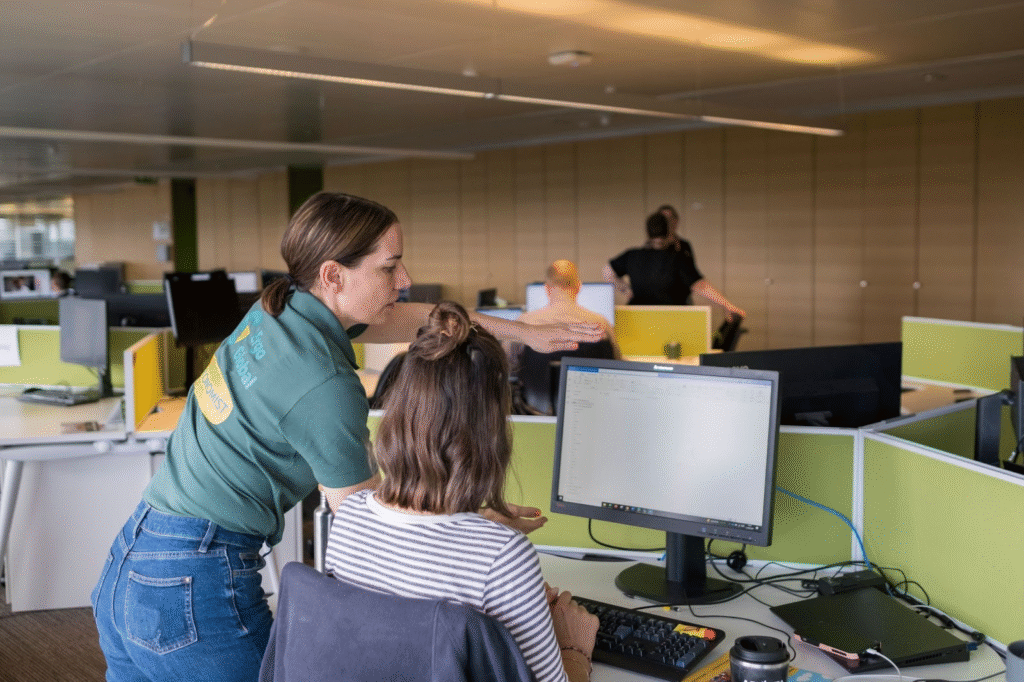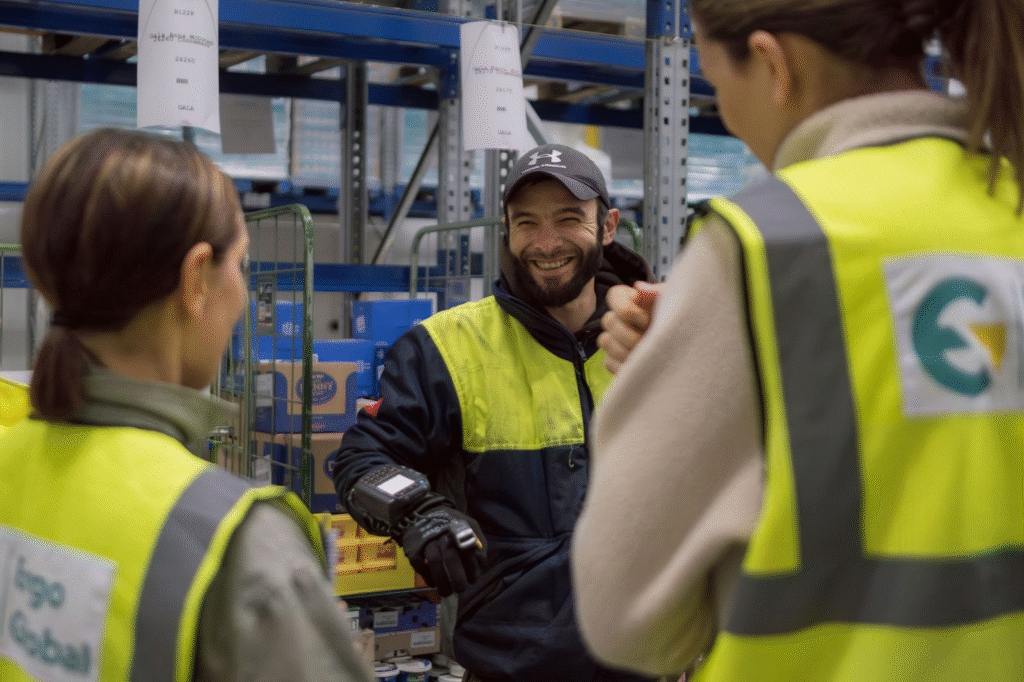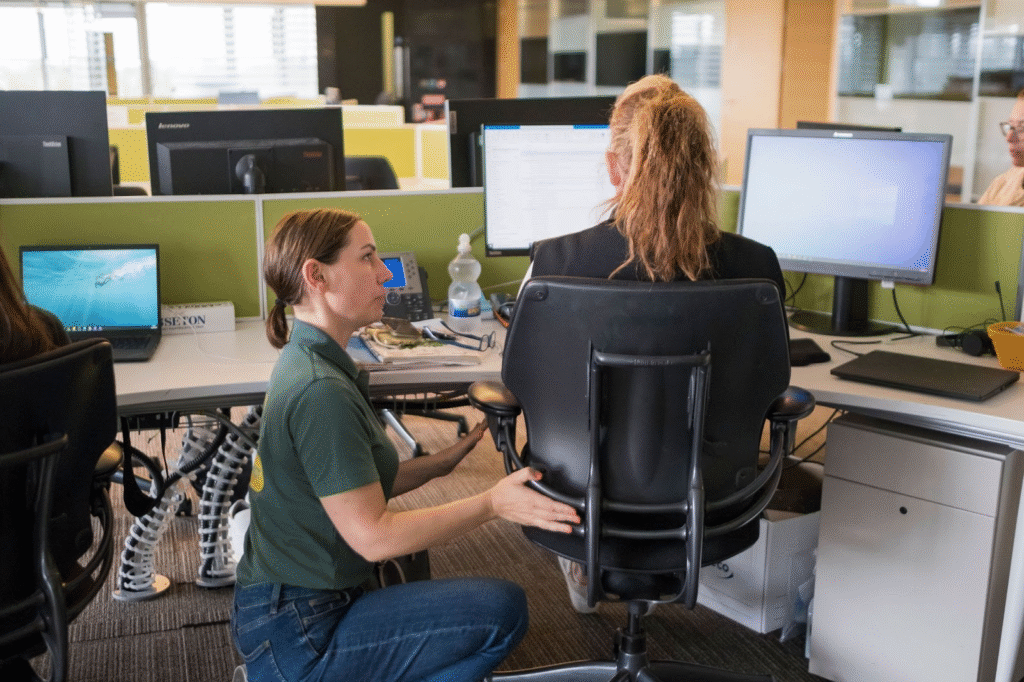Have you or your employees ever finished a workday with a sore back, strained wrists, or tired eyes? These common complaints are often more than just signs of a long day; they can be symptoms of a poorly designed workspace. When the tools, tasks, and environment are not aligned with human capabilities, it can lead to discomfort, injury, and a drop in performance. This is where ergonomics, the science of fitting the job to the person, becomes so important.
For many organizations, implementing effective ergonomic solutions requires specialized knowledge. This is the function of ergonomic consulting services, which provide expert guidance to help create healthier, safer, and more productive work environments. This guide will walk you through what these services are, what they involve, and how they can benefit your business.
An Introduction to Ergonomics
Before we explore consulting, let’s clarify what ergonomics is.
Often called human factors engineering, ergonomics is the scientific discipline focused on designing tools, tasks, and environments to match the capabilities and limitations of people. The objective is to improve efficiency, safety, and comfort while minimizing the risk of strain or injury.

In a workplace setting, poor ergonomics is a direct cause of many problems. It can lead to musculoskeletal disorders (MSDs), which are injuries affecting muscles, nerves, tendons, and joints. Conditions like carpal tunnel syndrome, tendonitis, and chronic back pain are frequently linked to ergonomic hazards such as awkward postures, repetitive motions, or applying excessive force.
What Are Ergonomic Consulting Services?
Ergonomic consulting services provide organizations with expert analysis and guidance to optimize the relationship between employees and their work environment. These services are delivered by professional ergonomists who assess workplaces to identify ergonomic risk factors. These risks can include awkward postures, highly repetitive motions, excessive force, and poorly designed workstations.
Unlike general health and safety consulting, which covers a broad range of workplace hazards, ergonomic consulting concentrates specifically on human-centered design. The objective is to make work safer, more comfortable, and more efficient by ensuring that job tasks and equipment align with the natural needs and limitations of the human body.

These services can be delivered in various ways. Some companies hire consultants for specific projects, like designing a new office layout or addressing a spike in reported injuries. Others establish an ongoing partnership, where a consultant provides continuous support, monitoring, and program management. The approach can be reactive, focusing on solving existing problems, or proactive, integrating ergonomic principles from the ground up to prevent issues from ever occurring.
The Role of an Ergonomic Consultant
An ergonomic consultant serves as a bridge between scientific principles and their practical application in your workplace. Their main responsibility is to evaluate how employees perform their tasks and identify areas where the work environment could better support natural human movements and capabilities.

This process involves several activities:
- Conducting detailed site visits and workplace walkthroughs.
- Observing workflows and job tasks to spot potential hazards.
- Interviewing employees to understand their discomfort and challenges.
- Using specialized tools and software to measure physical demands and strain levels.
- Analyzing injury data and employee feedback to identify trends.
Professional consultants often hold certifications, such as Certified Professional Ergonomist (CPE), and have educational backgrounds in fields like kinesiology, industrial engineering, occupational therapy, or biomechanics. They work collaboratively with your management team, human resources department, and employees to develop customized programs that promote long-term health and well-being.
The Scope of Ergonomic Consulting Services
Ergonomic consulting is not a one-size-fits-all service. It is adapted to the specific needs of the client and the industry. Here are some of the most common services offered.
Comprehensive Workplace Assessments
This is often the starting point of an engagement. Consultants perform on-site evaluations of workstations, tasks, and entire departments. They identify specific ergonomic hazards and quantify the level of risk. This could be an office DSE (Display Screen Equipment) assessment for computer users, a physical demands analysis for a manufacturing role, or an evaluation of a laboratory setup. The findings are compiled into a detailed report with prioritized recommendations.
Ergonomics Program Development and Management
A single assessment can fix immediate problems, but a comprehensive ergonomics program creates a sustainable culture of safety. Consultants help develop and manage these programs. This includes writing policies and procedures, establishing an in-house ergonomics team, defining metrics to track improvements, and providing ongoing support to ensure the program remains effective over time.
Ergonomic Design and Engineering Support
The best way to prevent ergonomic issues is to design them out from the beginning. Consultants can provide expert input during the design phase of new facilities, production lines, or office spaces. They help select furniture and equipment, design workstation layouts, and re-engineer work processes to reduce physical strain and improve workflow before a single employee is affected.
Specialized and Industry Specific Solutions

Different industries face unique ergonomic challenges. Consulting services can be highly specialized. For example, a consultant might focus on:
- Office Ergonomics: Optimizing computer workstations and addressing issues related to sedentary work.
- Industrial Ergonomics: Reducing risks from manual handling, repetitive tasks, and vibration in manufacturing or logistics.
- Healthcare Ergonomics: Addressing patient handling risks for nurses and manual tasks for lab technicians.
- Remote Work Ergonomics: Helping companies support the health and safety of their home-based employees.
Ergonomics Training and Education
Knowledge is a powerful tool. Ergonomic consultants deliver training sessions to empower employees and managers. This education goes beyond telling people to “lift with your legs.” It teaches employees how to recognize hazards, adjust their own workstations, and use proper body mechanics. Specialized training may also be offered to managers, engineers, or in-house safety teams to build internal expertise.
The Ergonomic Consulting Process

A typical engagement with an ergonomic consultant follows a structured and collaborative process.
- Initial Discovery and Goal Setting: The process begins with a consultation to understand your company’s specific challenges, goals, and concerns. Are you reacting to a rise in injuries, or are you proactively looking to improve employee well-being?
- In-Depth Assessment and Data Collection: The consultant will then conduct a thorough assessment. This phase involves observing employees at work, taking measurements, conducting interviews, and distributing surveys. They collect objective data to understand the root causes of any problems.
- Analysis and Solution Development: After gathering data, the consultant analyzes the findings to identify the primary risk factors. They then develop a set of practical, prioritized recommendations. These solutions could range from simple adjustments, like repositioning a monitor, to more significant changes, like investing in new equipment or redesigning a workflow.
- Implementation and Training: The consultant works with your team to implement the proposed solutions. This phase often includes providing training to ensure employees understand the changes and how to use new equipment or techniques correctly.
- Follow-Up and Continuous Improvement: The job isn’t finished once a solution is in place. A good consultant will follow up to measure the outcomes and ensure the changes have been effective. This iterative process helps fine-tune the solutions and ensures sustained improvements in health and productivity.
The Tangible Benefits for Your Business
Investing in ergonomic consulting services delivers numerous advantages that impact both your employees and your bottom line.
Lower Risk of Workplace Injuries
By identifying and mitigating ergonomic hazards, you can significantly reduce the incidence of MSDs. This leads directly to fewer workers’ compensation claims, lower insurance premiums, and a reduction in lost workdays due to injury.
Increased Productivity and Performance
When employees are comfortable and free from pain, they can focus better on their tasks. A well-designed workspace reduces physical and mental fatigue, leading to higher quality work, fewer errors, and improved overall efficiency.
Enhanced Employee Morale and Well-being
An investment in ergonomics sends a clear message to your employees that you care about their health and well-being. This fosters a positive work culture, boosts morale, and improves job satisfaction, which can in turn reduce employee turnover.
Significant Cost Savings
The return on investment for ergonomics is well-documented. The initial cost of a consultation or new equipment is often quickly offset by savings from reduced absenteeism, lower healthcare costs, and increased productivity. A healthier workforce is a more reliable and effective workforce.
Stronger Regulatory Compliance
Professional ergonomic services help ensure your organization complies with national and local health and safety regulations, such as OSHA standards in the United States or HSE guidelines in the UK. This helps you avoid potential fines and legal complications related to workplace safety.
Transform Your Workplace with Ergo Global

Ergonomic consulting services are a strategic investment in the health of your employees and the performance of your business. By partnering with experts, you can create a safer, more productive, and more supportive work environment that benefits everyone.
If you are ready to unlock the potential of a well-designed workplace, Ergo Global is here to help. Our team of experienced consultants offers a full spectrum of ergonomic services tailored to your unique needs, from comprehensive workplace assessments to program development and specialized training.
For organizations looking to build their own in-house ergonomic expertise, we encourage you to explore our highly-regarded DSE Assessor Training service. This program equips your team with the skills needed to conduct effective workstation assessments and foster a culture of safety from within.
Take the next step toward a healthier and more productive future.
Contact Ergo Global today to learn how our ergonomic consulting services can transform your business.



